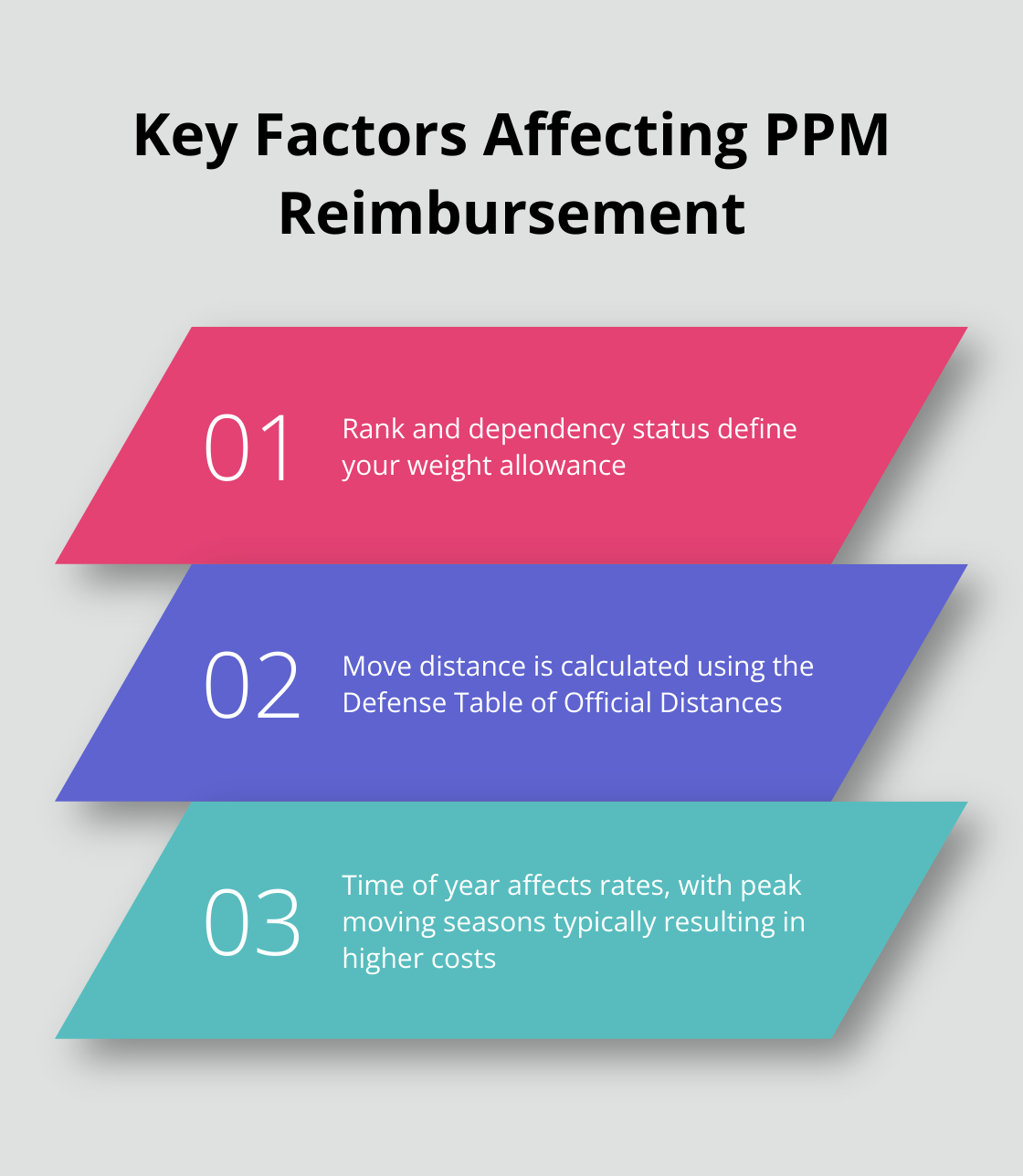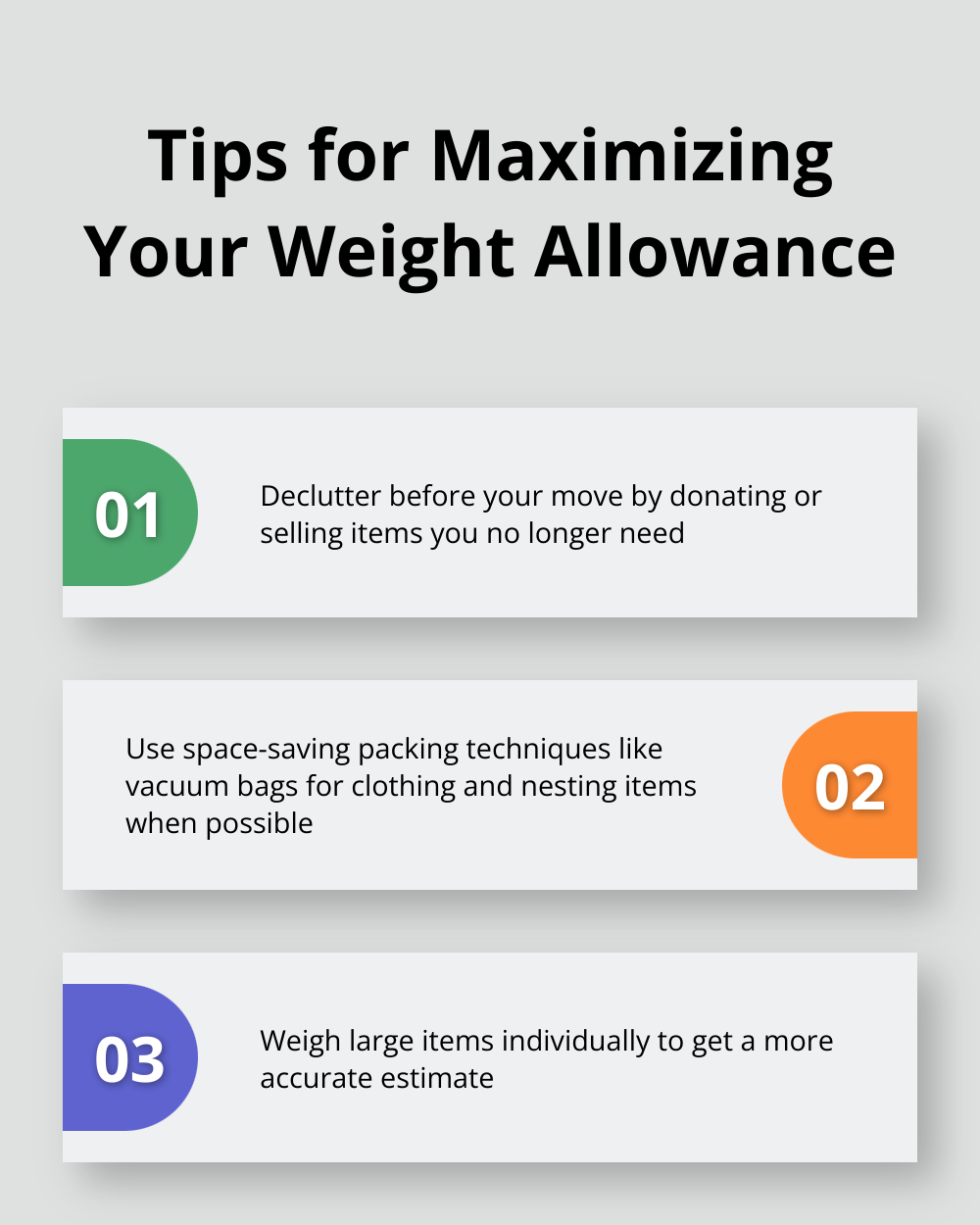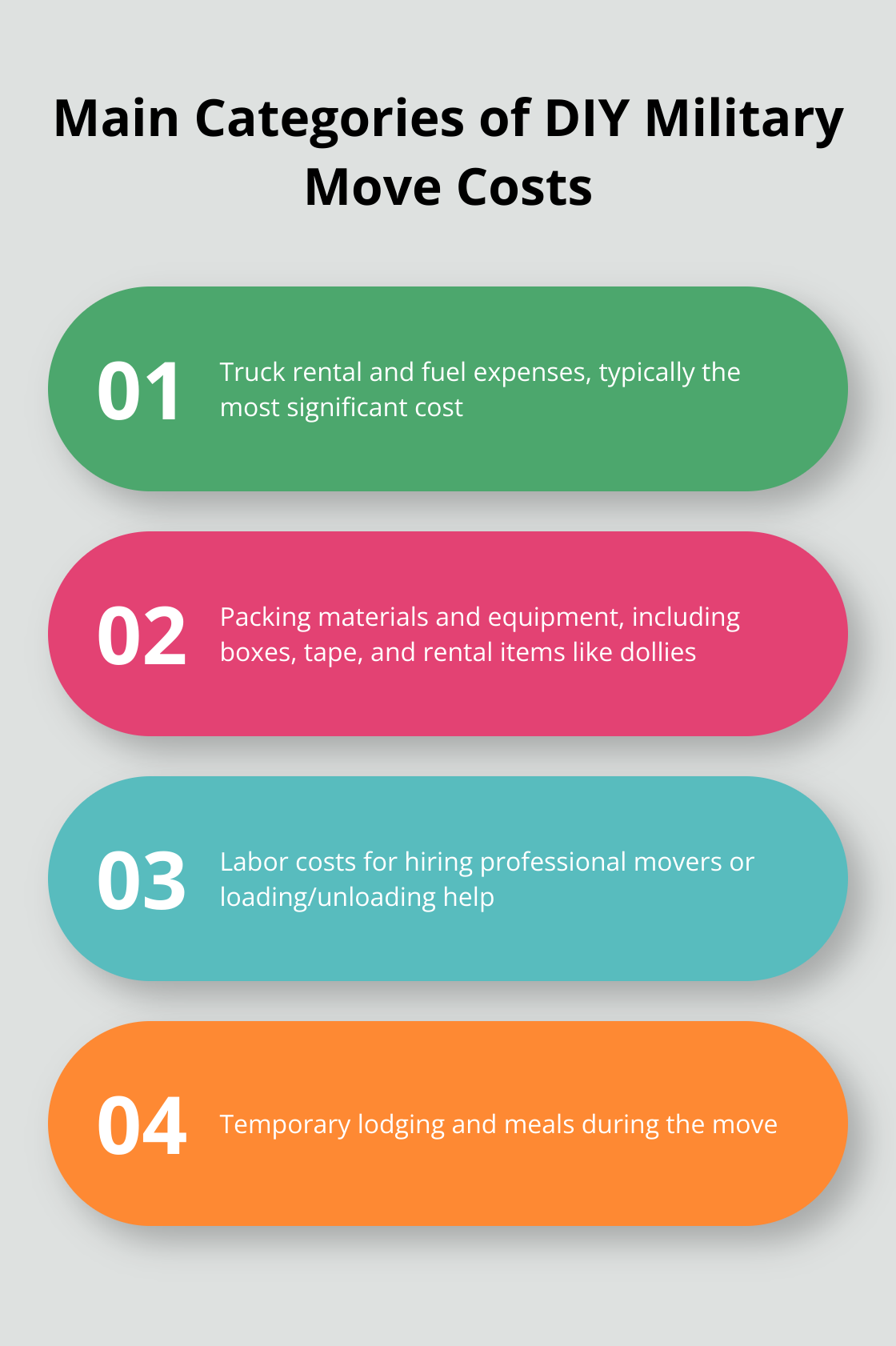Planning a DIY military move can be both exciting and challenging. At Southbay Moving Systems, we understand the importance of accurate cost estimation for service members embarking on a Personally Procured Move (PPM).
Our DIY military move calculator guide will help you navigate the complexities of estimating expenses, from truck rentals to packing materials. By understanding the factors that influence your reimbursement, you’ll be better equipped to make informed decisions and maximize your benefits.
What Is a Personally Procured Move?
Definition and Overview
A Personally Procured Move (PPM), previously called a Do-It-Yourself (DITY) move, allows service members to manage their own relocation. In this type of move, the government will reimburse you at 100% of what they would have paid professional movers to move you. This option empowers military personnel to take control of their move instead of relying on government-contracted movers.
Benefits of Choosing a PPM
Control Over Timeline
A PPM offers complete control over your moving schedule. You won’t need to adjust to a moving company’s timetable, which proves particularly advantageous during busy moving seasons.
Financial Rewards
PPMs can be financially beneficial. If you complete the move for less than the government’s estimated cost, you keep the difference. This potential for profit attracts many service members to the PPM option.
Key Factors Affecting Reimbursement
Several elements determine your PPM reimbursement:
- Rank and dependency status (these define your weight allowance)
- Move distance (calculated using the Defense Table of Official Distances)
- Time of year (peak moving seasons typically result in higher rates)

Planning Your PPM
Effective planning maximizes PPM benefits. Start by obtaining multiple quotes from moving truck rental companies. Compare these costs to your estimated reimbursement to assess potential savings. Include additional expenses in your calculations (e.g., packing materials, fuel, equipment rentals).
Importance of Documentation
Proper documentation is essential for a successful PPM. You must:
- Obtain weight tickets for your vehicle (empty and fully loaded)
- Keep all move-related receipts (packing supplies, truck rental, fuel)
- Maintain organized records for your reimbursement claim
These documents significantly impact your final payout, so meticulous record-keeping is vital. It’s important to note that military moves are not taxable unless you receive incentive pay, which is taxed at 22%. You will be mailed a W-2 on the incentive pay amount.
Considerations Before Choosing a PPM
While PPMs offer numerous advantages, they’re not suitable for everyone. Evaluate your ability to handle the physical demands of moving, assess your organizational skills, and consider your timeline. If you’re uncertain, consult with experienced movers to determine if a PPM aligns with your situation.
As we move forward, let’s explore how to calculate your estimated weight allowance, a critical component in determining your PPM reimbursement.
How Much Can You Move: Understanding Weight Allowances
Rank-Based Weight Allowances
Weight allowance primarily depends on your military rank and dependency status; the average weight allowances for a PCS are based on rank, dependency status and move type. Special circumstances, like moving overseas/OCONUS, a retirement, or other factors can affect your allowance. These figures can vary, so check the most current allowance tables provided by the Defense Travel Management Office.
To estimate your household goods’ weight, you can multiply the number of rooms in your home by 1,000 pounds. However, this method isn’t always accurate. For a more precise estimate, create a detailed inventory of your belongings. Many online tools can help you calculate weights based on item descriptions.
Calculating Move Distance
The Defense Table of Official Distances (DTOD) serves as the official source for calculating your move distance. This distance, combined with your weight allowance, forms the basis of your reimbursement calculation. To use the DTOD, you’ll need your current duty station’s zip code and your new duty station’s zip code. The system will provide the official mileage between these two points.
The DTOD mileage may differ from actual driving distance. The government uses this standardized measurement to ensure fairness in reimbursements across all service members.
Special Circumstances
Certain situations can affect your weight allowance. If you’re moving to or from Alaska or Hawaii, you might qualify for an increased weight allowance due to higher costs associated with these locations. Service members with professional gear (such as specialized equipment or reference materials required for official duties) may receive an additional weight allowance.
If you face a unique situation that might impact your move, consult with your transportation office. They can provide guidance on any special allowances or considerations that may apply to your specific circumstances.
Maximizing Your Allowance
To make the most of your weight allowance, consider these tips:
- Declutter before your move (donate or sell items you no longer need)
- Use space-saving packing techniques (vacuum bags for clothing, nesting items when possible)
- Weigh large items individually to get a more accurate estimate

Accurate weight estimation forms just one part of planning your Personally Procured Move (PPM). The next step involves calculating various expenses that can impact your overall moving costs. Let’s explore how to estimate these expenses to help you make the most of your military move.
How Much Will Your DIY Military Move Cost?
Truck Rental and Fuel Expenses
The most significant expense in your Personally Procured Move (PPM) will likely be the moving truck rental. Prices fluctuate based on truck size, distance, and rental duration. A 26-foot truck for a cross-country move might cost between $1,500 to $3,000 (depending on the company and season).
To calculate fuel costs, consider your truck’s fuel efficiency. Most moving trucks average 8-12 miles per gallon. Multiply your trip’s mileage by the current fuel price and divide by the truck’s MPG. For a 1,000-mile move in a truck that gets 10 MPG, with gas at $3.50 per gallon, you’ll spend about $350 on fuel.

Packing Materials and Equipment
The cost of packing materials can add up quickly. Boxes, tape, bubble wrap, and packing paper for a typical 3-bedroom home may cost $200-$400. You can reduce this expense by finding free boxes from local businesses or using household items like suitcases and dressers for packing.
Equipment rentals such as dollies, furniture pads, and straps are essential for a safe move. These typically cost $50-$100 for a week-long rental. Some truck rental companies include these items, so check your quote details.
Labor Costs
If you plan to hire help, factor in labor costs. Professional movers typically charge $25-$50 per hour per mover. For a 3-bedroom home, you’ll need 2-3 movers for about 6-8 hours, totaling $300-$1,200.
You might also consider hiring help just for loading and unloading. Some services offer moving labor at more affordable rates, often around $200-$400 for a full day’s work.
Temporary Lodging and Meals
For long-distance moves, include costs for hotels and meals. The government provides per diem rates for lodging and meals, which can serve as a guide. As of 2025, the standard CONUS per diem rate is $155 for lodging and $69 for meals and incidental expenses.
Calculate your total based on the number of travel days. A 3-day move might incur $672 in per diem expenses ($155 x 3 for lodging, plus $69 x 3 for meals).
Additional Considerations
Don’t forget to account for potential hidden costs such as insurance, parking fees, and tolls. These expenses can vary greatly depending on your route and the cities you’ll pass through.
Try to overestimate rather than underestimate your costs. This approach will help you avoid financial surprises and ensure you have enough funds to cover all aspects of your move. It’s important to allocate a certain percentage of each paycheck toward savings and pay down your debt as part of your budget process.
Final Thoughts
A DIY military move calculator helps you estimate costs accurately and make informed decisions about your relocation. You must plan early, obtain multiple quotes for truck rentals, and compare them against your estimated reimbursement. Proper documentation (including receipts, weight tickets, and organized expense records) streamlines your reimbursement process and ensures you receive the full amount you’re entitled to.
Southbay Moving Systems understands the complexities of military relocations. Our team provides guidance and support, even if you choose to manage your own move. We specialize in full-service moves but also recognize the value of Personally Procured Moves for many service members.
With over 30 years of experience in military relocations, we ensure your move is smooth and cost-effective. A well-planned DIY military move can be financially rewarding and empowering. You’ll be well-prepared for a successful relocation if you calculate your costs accurately and follow the tips outlined in this guide.




